Pilot program trains next generation to control invasive plants, protect and plant trees
|
Published: 08-11-2024 1:02 PM
Modified: 08-11-2024 4:01 PM |
SOUTH HADLEY — On a woody hillside in a 100-plus-acre private parcel, Phoebe Weinberg, her face blocked by a shield attached to her hard helmet, begins dismantling an autumn olive growing over a red oak sapling. The roar of the chainsaw covers the sound of a limb from the invasive shrub crashing to the ground, its leaves reverberating from the impact.
Weinberg wastes no time, sawing off another limb, then another, until only a series of stumps is left.
As Weinberg turns her attention to the next autumn olive, Miles Plitt dots the newly exposed stump tissue with a blue herbicide, which the plant will draw down through its vascular tissue into its roots. Invasive species are aggressive growers, so as long as a root system exists under the soil, the autumn olive will regenerate. The chemical ensures the tree won’t grow back.
Weinberg and Plitt make their way across the hillside for nearly an hour, hacking and dotting away until the invasive species that once made up roughly 30% of the woody matter on the hillside are gone. This type of invasive species control work is time-consuming and expensive, but demand for such work is growing almost as fast as a bittersweet vine.
Invasive species infringe on state climate goals, which depend on native trees to take in and sequester carbon from the atmosphere. Biodiversity is also depleted around invasives, as a single species can overwhelm an area and monopolize space, sunlight and nutrients needed by native species.
One main problem is there aren’t enough people certified to do this type of work.
“[Demand] is rising because there’s much more money from the federal government to states, and the states themselves — they want to plant trees, they want to treat invasives to build resilience in the forest,” said Laura Marx, a climate solutions scientist for The Nature Conservancy. “They want to stay on top of all the things that could cause a bunch of trees to not grow in the way we are sort of depending on them to. We’re not growing our workforce at that pace.”
The conservancy, with a regional office in Great Barrington, has launched a pilot program called the NextGen Forest Project that’s designed to teach the next generation of foresters while simultaneously planting the next generation of trees. The program offers three apprentices hands-on experience treating invasive species, as well as installing tree shelters and cages for young saplings.
Article continues after...
Yesterday's Most Read Articles
 Local ‘Hands Off!’ standouts planned as part of national effort
Local ‘Hands Off!’ standouts planned as part of national effort
 Shelburne Selectboard determines police detective will retain job
Shelburne Selectboard determines police detective will retain job
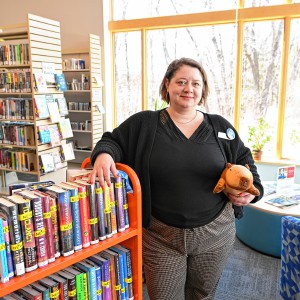 Local libraries react to state funding cuts, federal administrative leave
Local libraries react to state funding cuts, federal administrative leave
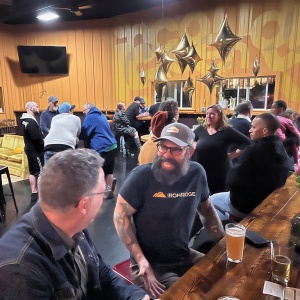 Incandescent Brewing now open in Bernardston
Incandescent Brewing now open in Bernardston
 Cooking up an expansion: Cocina Lupita eyes second location in Turners Falls
Cooking up an expansion: Cocina Lupita eyes second location in Turners Falls
 ‘She is our future’: Thirty years after permitting women to join, Montague Elks is almost entirely women-led
‘She is our future’: Thirty years after permitting women to join, Montague Elks is almost entirely women-led
In collaboration with the Forest Stewards Guild, the first year of the program connects landowners in Massachusetts and Vermont who are interested in active forestry work with the apprentices and their supervisor. The guild is in charge of the training, while The Nature Conservancy reaches out to private landowners and organizes where the young foresters go to do their work. In addition to South Hadley, the budding foresters in the program are working on private land in several other communities in Hampshire and Franklin counties, including Conway, Hawley, Huntington and West Chesterfield.
Massachusetts has 96 private and 35 public foresters listed on its Licensed Forester Directory. While every registered forester must have some ecological forestry experience, not every forester on the list gets their hands dirty for a job: some simply survey forests and advise treatment rather than providing it, while others spend time researching the latest forestry techniques.
“A lot of the foresters, as in many industries, are older,” Marx pointed out. “You probably aren’t doing this when you’re 70. It’s very hard work, physically demanding work. So you kind of, to some extent, age out of it.”
Otis Wood, a forester working with the Forest Stewards Guild chapter in Vermont, said “there’s not enough [people], not even close” to keep up with fast-growing invasive species populations, which is why he’s training Weinberg and Plitt in the skills and certifications required for a career in this type of forestry work.
As he explains the program during an interview, Plitt is cutting the olive limbs into more manageable parts with a hand saw. His only experience with forestry before this apprenticeship was through his college’s landscaping crew, but since the head of the crew wasn’t herbicide-certified, the group only cut invasive species to a small nub and kept their fingers crossed that they don’t grow back.
He heard about the NextGen Forest Project from an email sent out to Warren Wilson College students and decided to apply. Two months into the program, he feels he has a solid understanding of the industry.
“Depending on what species are at the site, I know what kind of equipment we need to bring, if we have to do foliar or custom treatments. I’ve learned a lot about, based around what species are present, this is what kind of treatment we need to do,” he said. “We’ve learned a little bit of budgeting for stuff, too, like go out, do a site visit, see what’s there, see how much of it’s there [and] overestimate.”
A week earlier, Plitt installed tree barriers around saplings of native hardwoods including red oak and red maple on a different area of the property. For these, he wraps a sheet of plastic around a young tree, pushes bamboo stakes into the ground to hold the sheet in place, then zip ties the bamboo to the tree. The plastic sheet will frustrate deer looking for a snack, protecting the tree for at least six years and ensuring it survives.
At this site, though, the interns are doing only invasive species control. Wood points to a native dogwood sapling that was previously overtaken by an autumn olive and bittersweet vine. The young tree was misshapen from phantom weight, bent by the invasive that once loomed over it. Wood said the patch of light illuminating the sapling, once blocked by the olive’s canopy, will allow it to bounce back.
“So this thing will be happy in the next couple of years, and that’s what we’re going for, to have this thing and the [speckled] alder running the show around here,” Wood said.
The apprentices also received a crash course on forest dynamics — from carbon pooling, a term for a system that can store or release carbon; to timber stands, areas of the forest able to grow trees for potential harvest. Invasive species, according to Wood, pose a problem for young trees and deciduous shrubs, aggressively outgrowing and suffocating keystone native plants.
Speckled alder, for instance, is an important food source for beavers and source of charcoal for humans, but the plants are quickly overtaken by autumn olive.
“Invasives follow us humans, essentially,” he said. “Large-scale human disturbances, that’s where the most invasives will be.”
All of that knowledge gets applied in the field, when Plitt observes the role and impact active forestry treatments have on the future of Northeastern forests.
“When I was looking on the side of roads and in people’s property, you can see how fast [invasive species] are taking over and how quickly it will become really unmanageable,” Plitt said. “It’s almost already unmanageable but if we don’t start now, if we don’t pick up the pace a little bit, we’re going to fall irreparably behind.”
Emilee Klein can be reached at eklein@gazettenet.com.






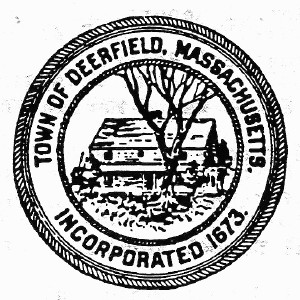 New panel to review senior housing proposals in Deerfield
New panel to review senior housing proposals in Deerfield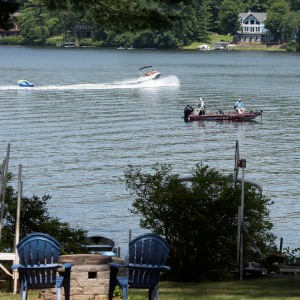 Shutesbury reviewing how to improve safety on Lake Wyola in wake of accident last summer
Shutesbury reviewing how to improve safety on Lake Wyola in wake of accident last summer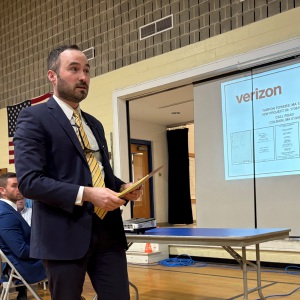 Colrain zoning board approves variance for Call Road cell tower
Colrain zoning board approves variance for Call Road cell tower
